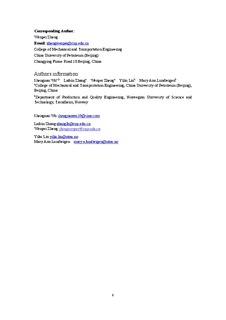| dc.description.abstract | Drilling operations of offshore oil and gas fields are characterized by high technical complexity, high risks, and high costs, since they are always in harsh environments with complicated geological factors. Lost circulation or well “kick” is a typically hazardous event that may occur while drilling wells and it also may develop into a blowout accident without being well handled. It is necessary to identify and analyze the root causes of these events and their consequences, in order to prevent serious accidents from happening. In a drilling operation, the risk of blowout may change with time, depending on the operation stage, and such kind of dynamics should be captured in risk assessment. This paper presents an approach for determining the conditional probabilities of hazardous events and their consequences. The approach includes models that take into account the influence of degradation and (if applicable) new real-time information which represents the changing model parameters (such as state change of mud density). Such an approach is based on the Dynamic Bayesian Network (DBN) theory and then incorporates additional nodes to address the model uncertainties and parameter uncertainties. In addition, the effect of equipment degradation, which had been ignored in the existing researches, also is considered for modeling. Given that a hazardous event has occurred, this presented model can be used to predict the risk evolution, as well to reason its root causes during offshore drilling operation. A bowtie model is established to link the potential incident scenarios with the pressure regimes and formation load capacity, and then the model is translated into a DBN. DBN inference is adapted to perform prediction and diagnosis for dynamic risk assessment, and then a sensitivity analysis is carried out to find the relative importance of each root cause. A case study with focusing on lost circulation during three drilling scenarios is adapted to illustrate the feasibility of the proposed approach. | nb_NO |
